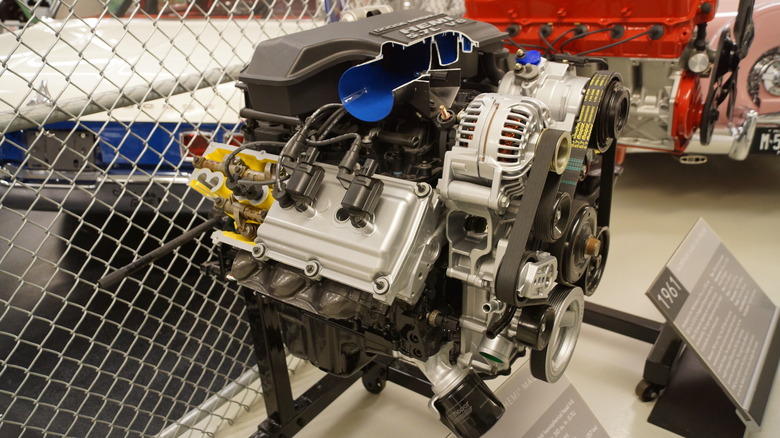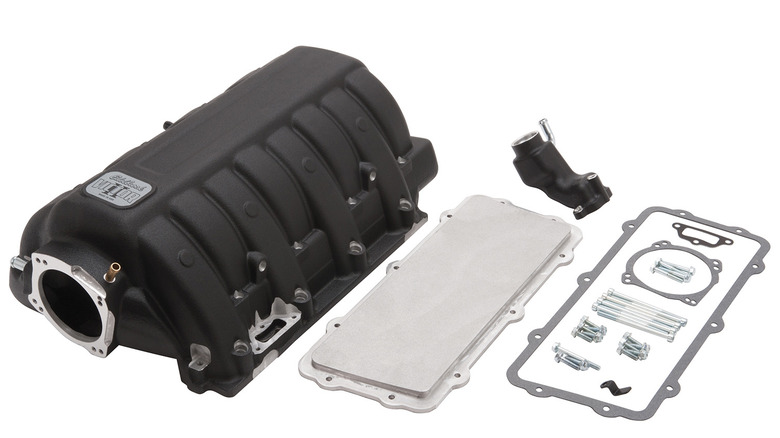Here Are The Pros & Cons Of Altering The Intake Manifold On A 5.7 HEMI
We may receive a commission on purchases made from links.
The Chrysler HEMI V8 engine was the first of its kind and has been a popular choice for performance-oriented drivers since it was introduced in the early 1950s. The third-generation HEMI came along in 2003 and debuted in 5.7-liter form under the hoods of select Ram trucks. Dodge Durango SUVS got the 5.7-liter HEMI the following year, and it was first used in the Jeep Grand Cherokee in 2005. That same year, a 6.1-liter HEMI appeared in SRT (Street and Racing Technology) versions of various Mopar family models, including the Grand Cherokee, Chrysler 300C, and the Dodge Challenger and Charger. A 6.4-liter version came in 2007, and in 2009, the 5.7-liter third-gen HEMI got a major redesign.
That update included variable valve timing, new cylinder heads, and an optional variable displacement system, which activates and deactivates one bank of cylinders according to the demands placed on the engine. A new intake manifold was also part of the 2009 upgrade and helped boost output well beyond 300 horsepower.
Gearheads are always looking to wring a little extra power out of any engine, but what advantages and disadvantages come with changing the stock intake manifold on a 5.7-liter HEMI? In general, an intake manifold distributes the fuel/air mixture from the throttle body to each cylinder via the intake valves. As a result, swapping out your stock manifold can provide a noticeable horsepower boost.
[Featured image by Greg Gjerdingen via Wikimedia Commons | Cropped and scaled | CC-BY 2.0]
5.7-Liter HEMI intake upgrades are easy to install but can be expensive
In addition to boosting horsepower, upgrading the manifold also gives you a chance to replace the manifold gaskets, which can impair performance as they degrade. If you're looking to altering your intake manifold yourself, the good news is they are fairly easy to install. However, the price of the job can vary substantially.
MILI Parts sells an upgrade kit for $348 on Amazon. Modern Muscle Extreme will port out your stock manifold for $400, and adds an extra $300 core charge if you don't want to pull yours first to send it in. This will reduce your down time from the three to five weeks MMX needs to modify your manifold to the couple of hours it takes to do the swap.
Edelbrock, the decades-old carburetor and performance parts supplier, sells the Victor series manifold for third-gen HEMI engines for $1,112.95. You'll also need to install a $230.95 fuel rail kit along with this manifold. Edelbrock advertises this kit as being able to increase the 6.4-liter HEMI's output by 25 horsepower, so you can probably expect similar benefits on the 5.7-liter engine. The kit also allows you to fit nitrous oxide boosters and/or swap the stock 80-millimeter throttle body out for a 92-millimeter Hellcat unit. Either of these additional upgrades will provide you an even larger horsepower increase, but you'll also incur extra costs.

